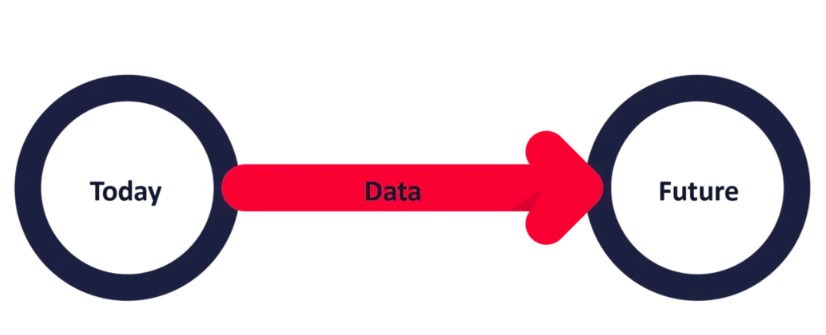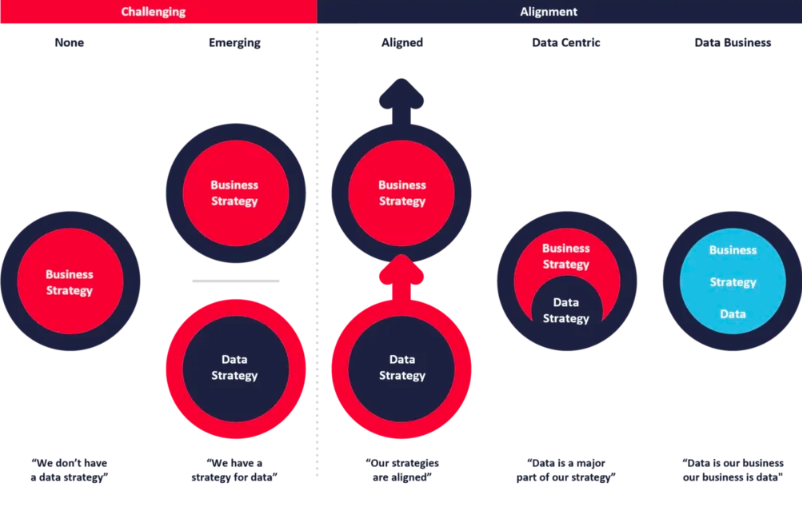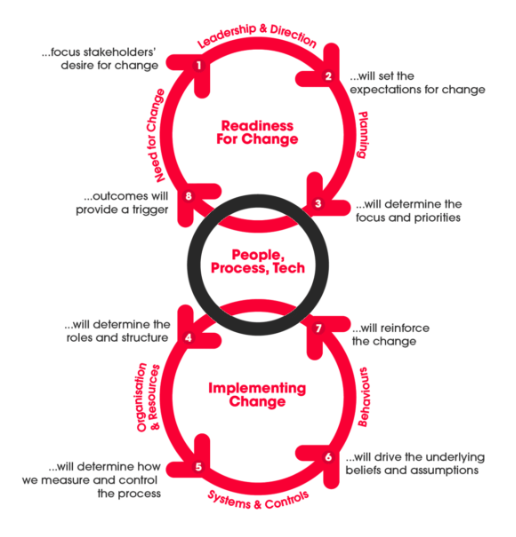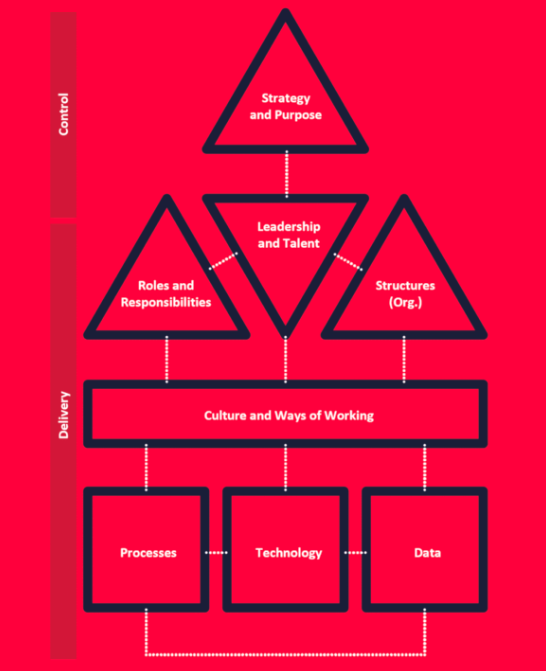Data. It plays an integral role in the success of your business. So much so, that it’s hard to find a company nowadays that doesn’t want to be more data-driven. But how can organisations harness and leverage data in a way that helps them to meet their overall business goals?
At Oakland, we pride ourselves on our extensive expertise in data and our approach to simplifying it. This ensures you can fully understand how your business can reap the benefits of having a strong data strategy.
In this comprehensive guide, we’ll teach you all about the power of data and the right way to approach it to do just that.
What is a Data Strategy?
A data strategy sets a vision and roadmap that explains how an organisation will use data and analytics to achieve its strategic objectives.
A well-defined data strategy aligns data and analytics activity with clear business aligned objectives. This involves outlining the changes, investments, and capabilities needed to make the data strategy effective.
Remember, data strategy is not about creating a different future for your organisation. At Oakland, we want to use data to realise the organisation’s vision and strategy. It’s all about using data to serve organisational goals and drive value.
The wider future of the organisation is (or should be) already imagined through the overall business strategy.

Why Do You Need a Data Strategy?
Simply put, it today’s market, organisations need a data strategy in order to propel them towards their business goals. Here are just a few of the key reasons having a data strategy is essential:
Opportunity Identification
Many organisations sense missed opportunities with their data but struggle to pinpoint them. A structured data strategy helps uncover and prioritise these opportunities.
Vision Setting
A data strategy creates a clear future vision to unite data efforts and guide decision-making.
Alignment
It aligns priorities, resources, and roadmaps behind a clear vision, addressing disjointed data functions and activities.
ROI Realisation
Ensures investments in data yield expected benefits and helps secure necessary budget and resources.
Customer Satisfaction
Successful data implementation improves data availability, access, quality, and timeliness, addressing common frustrations.
Foundation Building
Links customer frustrations with root causes and provides solutions, fostering data governance.
Breaking Reactive Cycles
Helps data teams move from a reactive stance to a proactive, strategic approach.
If these points resonate with your organisation, it’s likely time to consider creating or updating your data strategy.
Finding the Right Approach to Your Data Strategy
At Oakland, we have an extensive collection of expertise in all things data; from strategy and governance to data engineering, analytics and artificial intelligence. One thing we feel incredibly passionate about is simplifying data strategy by taking an easy, seamless approach that everyone in your organisation can understand.
What Not to Do
Bear with us. It sounds strange, but a data strategy shouldn’t be a strategy for data.
It’s so easy to fall into the trap of thinking of data as something separate from the wider organisation, with its own priorities, objectives and concerns. But this is a fatal error.
Take a look at this. Where would you say you are today?

A common mistake is to fall into the trap of creating a ‘strategy for data’ rather than using data to achieve organisational goals. Avoid thinking of data as separate from the wider organisation. Instead, re-imagine data as a means to meet organisational needs.
A Better Way
To avoid the ‘strategy for data’ pitfall, our data strategy consultants work collaboratively alongside your organisation to ensure your data strategy focuses on the following:
- Organisational Outcomes: Understanding what outcomes your business needs and the role of data in achieving them.
- Balanced View: Incorporating people, processes, and technology, rather than overemphasising tool and technology alone.
- Compelling Narrative: Crafting a data strategy that tells a compelling story, making the technical aspects accessible and engaging for non-technical stakeholders.
- Collaborative Creation: Developing the strategy through workshops, customer engagement, and stakeholder collaboration to ensure alignment and instill confidence.
Oakland’s Approach: What Should a Data Strategy Include?
At Oakland, we have created a foolproof 3-step approach to create a comprehensive data strategy, ensuring it covers the following key components:
1. Strategic Vision
Outline what you aim to achieve and the high-level changes needed. Key elements include:
- Purpose: The role of data in the organisation
- Scope: The scale and content of the strategy
- Future: Big-picture changes and benefits
- Objectives: Tangible goals aligned with business objectives
- Key Results: Metrics to measure success
- Capabilities: High-level capabilities to be built or enhanced
2. Case for Change
Present a compelling rationale for pursuing the data strategy. Include:
Current State: An unbiased assessment of current data and analytics capabilities
Voice of the Customer: Real-world data problems and aspirations from the customer community
Target State: Future data maturity goals tied to business needs
Business and Financial Rationale: Clear and agreed-upon assumptions on profitability and benefits
3. Detailed Data Strategy
Add detail to your strategic vision to make it implementable. Focus on:
- Future State Definition: Specific ways the future will differ from today
- Concept Designs: High-level views of future data and analytics operations
- Levers of Influence: How the strategy will be implemented and influence the organisation
- Key Gaps to Close: Documenting gaps and establishing accountability

4. Strategic Roadmap
Outline the phases and activities for implementing the strategy. This will include:
- 2-3 Year Roadmap: Ambitious yet flexible to account for shifts in organisational context
- Transitional States: Clear transitions to sequence the roadmap.
- Projects on a Page: High-level view of scope, activity, and resources for implementation
- Governance: Oversight, reporting structure, and governance plans
5. Target Operating Model (TOM)
Describe the people, processes, and technologies required for delivering value from data. Key components include:
- People: Roles, responsibilities, and skills needed
- Processes: Workflow and procedures for managing data
- Technology: Tools and platforms to support data initiatives

The 5-Step Phase: How to Create Your Data Strategy
So far, we’ve outlined what to include in your data strategy. Writing it is a big task. Breaking it down is key to success.
This section summarises how to do that and work through the process of designing a data strategy, along with important questions to consider at each stage.
Phase 1: Discover
Understand the current state and future goals of your business. Key questions include:
- What is the current maturity of your data capabilities?
- What are the experiences and needs of data customers?
- What are the organisation’s strategic goals, and how can data drive them?
- What is the vision for data and analytics?
Phase 2: Define
Outline the data capabilities that align with your organisational vision by considering the following aspects:
- Future state design principles
- Strategic questions and trade-offs shaping the data strategy
Phase 3: Plan
Establish the processes, standards, technology, and organisational changes needed. This includes:
- Strategic roadmap and transition states
- Success factors and measurement framework
- Programme mobilisation and change management
Phase 4: Execute
Delivering the transformation via iteration, gathering lessons to adjust delivery. Activities include:
- Programme management and change delivery
- Communication and training
- Project control and assurance
- Implementation monitoring and feedback loops
Phase 5: Adapt
Data strategy programmes are never a straight line – there are always twists and turns along the way. Ensuring you have the flexibiliy to meet changing demands and sustain the delivery of change. This focuses on:
- Continuous improvement aligned with key performance indicators.
- Transition and support for a sustainable future.
- Monitoring and assurance of delivery and benefits.
By following these guidelines, you can create a data strategy that effectively leverages data to successfully achieve your organisation’s strategic goals and objectives.
Don’t Just Take Our Word For It
At data experts, we know more than most that the proof is in the pudding. Visit our client case studies to learn more about the projects we’ve successfully aided.
Begin Your Data Journey Today: How Can Oakland Help?
Wherever you are on your data strategy journey, Oakland can help you make the next step. At Oakland, we offer a range of customisable services which span the entire data strategy lifecycle.
You can choose to engage us at specific points on your journey, or we can partner with you through the entire process of defining and implementing your data strategy.
To take the first step towards leveraging your data strategy, contact us today to chat with one of our friendly experts who can help you get started.
Looking for more more tips and advice on all things data? Head to our dedicated knowledge hub, where you’ll find helpful guides and case studies, videos and more.


